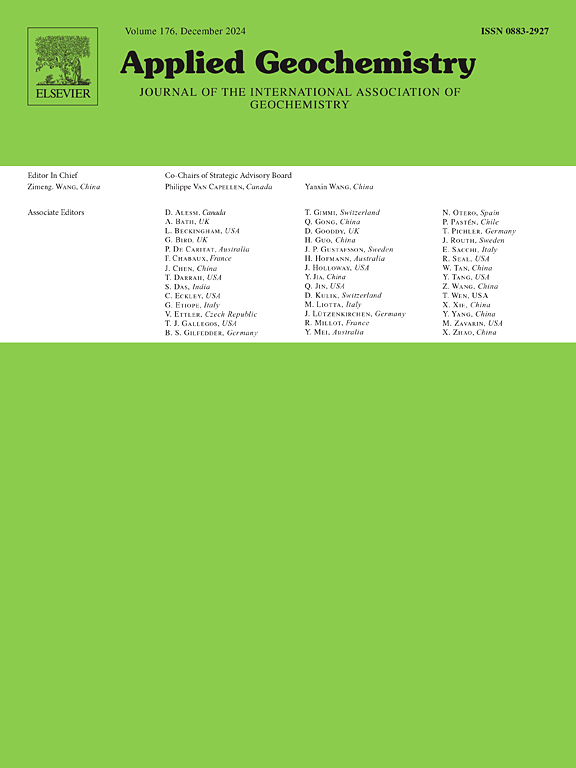青藏高原 OCPs 和 PCBs 对人类健康的危害及相应的人体阈值
IF 3.1
3区 地球科学
Q1 GEOCHEMISTRY & GEOPHYSICS
引用次数: 0
摘要
尽管有机氯农药(OCPs)和多氯联苯(PCBs)已被禁止或限制多年,但在一些有利于其富集的地方,如高纬度或高海拔地区,它们仍然是对健康构成威胁的重要污染物。然而,在阐明环境风险和建立这些风险与人类健康之间的明确关系方面,研究工作仍然严重不足。我们查阅了有关青藏高原土壤中 OCPs 和 PCBs 浓度的文献,以计算当地的健康风 险指数并绘制风险地图。应用食物链模型(ACC-Human)来预测这些化学物质在人体内的浓度。较高风险区域位于青藏高原东南部,这表明邻近地区的潜在排放和远距离迁移会产生影响。根据浓度-风险关系,毒性最强的化学物质是多氯联苯,其体内浓度阈值低至 13 纳克/克脂质。鉴于工业生产或历史遗留问题造成的持续排放,现在应特别关注青藏高原等山区的多氯联苯。本文章由计算机程序翻译,如有差异,请以英文原文为准。

The human health risks and corresponding body thresholds of OCPs and PCBs in the Tibetan Plateau
Although organochlorine pesticides (OCPs) and polychlorinated biphenyls (PCBs) have been banned or restricted for years, they remain significant contaminants posing health risks in some places where are favorable for their enrichment, such as areas with high latitude or altitudes. However, the elucidation of environmental risks and the establishment of a clear relationship between these risks and human health are areas that remain significantly underdeveloped. Literatures on the concentrations of OCPs and PCBs in soil of the Tibetan Plateau were reviewed to calculate local health risk indexes and create risk maps. A food chain model (ACC-Human) was applied to predict human body concentrations of these chemicals. Higher risk areas are located in the southeastern Tibetan Plateau, suggesting influences from potential emissions in adjacent regions and long-range transport. Based on the concentration-risk relationships, the most toxic chemicals identified were PCBs, with a body concentration threshold as low as 13 ng/g lipid. Given the ongoing emissions from industrial production or historical legacy, it is hightime to lay a particular focus on PCBs in mountainous areas like the Tibetan Plateau.
求助全文
通过发布文献求助,成功后即可免费获取论文全文。
去求助
来源期刊

Applied Geochemistry
地学-地球化学与地球物理
CiteScore
6.10
自引率
8.80%
发文量
272
审稿时长
65 days
期刊介绍:
Applied Geochemistry is an international journal devoted to publication of original research papers, rapid research communications and selected review papers in geochemistry and urban geochemistry which have some practical application to an aspect of human endeavour, such as the preservation of the environment, health, waste disposal and the search for resources. Papers on applications of inorganic, organic and isotope geochemistry and geochemical processes are therefore welcome provided they meet the main criterion. Spatial and temporal monitoring case studies are only of interest to our international readership if they present new ideas of broad application.
Topics covered include: (1) Environmental geochemistry (including natural and anthropogenic aspects, and protection and remediation strategies); (2) Hydrogeochemistry (surface and groundwater); (3) Medical (urban) geochemistry; (4) The search for energy resources (in particular unconventional oil and gas or emerging metal resources); (5) Energy exploitation (in particular geothermal energy and CCS); (6) Upgrading of energy and mineral resources where there is a direct geochemical application; and (7) Waste disposal, including nuclear waste disposal.
 求助内容:
求助内容: 应助结果提醒方式:
应助结果提醒方式:


